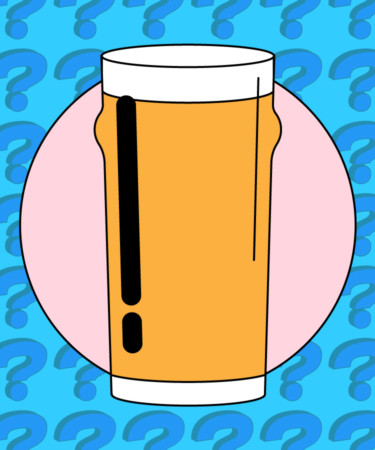This October, VinePair is celebrating our second annual American Beer Month. From beer style basics to unexpected trends (pickle beer, anyone?), to historical deep dives and new developments in package design, expect an exploration of all that’s happening in breweries and taprooms across the United States all month long.
When ordering a draft beer at a bar, one might reasonably assume it’ll be served in a pint glass. The 16-ounce vessel is a staple around the world, and arguably the most popular glass for serving beer at bars and, in many instances, even at home. But is the pint really the best glass for beer service?
To find out, we asked Zach Mack, owner of NYC’s ABC Beer Co., for expert tips on which glasses craft beer geeks should serve their beer in (hint: The answer may not always be the pint).
Mack explains that, up until the fairly recent craft beer boom, beer didn’t need a special vessel of its own. “What was available in the beer market 15 to 20 years ago didn’t really need a different kind of glass,” says Mack. “If you were drinking Bud Light or an adjunct lager out of a glass, an old-school shaker pint or some mug was OK because there’s not really any nuance to the beer.”
But, he says, when drinking beers with distinct aroma and expression, a pint glass may not cut it. “You wouldn’t drink whiskey out of a coffee cup, and you wouldn’t drink wine out of a water glass,” he says. The same goes for good beer. “Beer deserves respect if it’s made the right way,” Mack says.
The most common pint glass used in dives and home bars alike is what Mack calls a “shaker pint.” These glasses were originally made for shaking cocktails, not serving beer, but after Prohibition ended, many bars began using them as multipurpose glasses for both shaking mixed drinks and serving beer.
But these glasses lack the proper shape for optimal aromatics. Instead, Mack recommends using nonic or Willi Belcher pint glasses, or Teku glasses, as multipurpose glasses for quality ales and lagers.
That’s because the varying shapes of beer glasses are for more than just aesthetics — each shape serves a specific purpose. For example, the nonic — a pint glass with a bulge near the top — is built with the intention of optimal stacking potential. Plus, Mack says, this standard 16-ounce pint builds in an extra 2 ounces for head. “You’re supposed to serve the beer with a half an inch of foam on the top,” he says. “Without it, it means your beer’s flat.”
And the volume of one’s beer glass can also affect one’s sipping experience, especially depending on the beer. “You can’t serve someone a 9 and a half percent triple IPA in a 16-ounce glass,” Mack says. “That’s just irresponsible.”
In a pinch, brandy snifters can be used in place of beer glasses for such high-ABV brews, but more recently, beertenders have become partial to the Teku glass. These smaller, stemmed glasses can be used for almost any beer: “They’re as good for aromatic Belgian beers as they are for barrel-aged sours and crazy, funky farmhouse ales,” Mack says. Plus, for home enthusiasts lacking shelf space, these glasses can be easily used for wine.
And what of the infamous beer stein, often found at Oktoberfest celebrations? “A lot of people end up using them for change jars for a reason, right?” Mack jokes. Though there’s rarely a good reason to sip from a stein — as these vessels are mostly ornamental — Mack says they’re great for decoration, or for use as water glasses.
